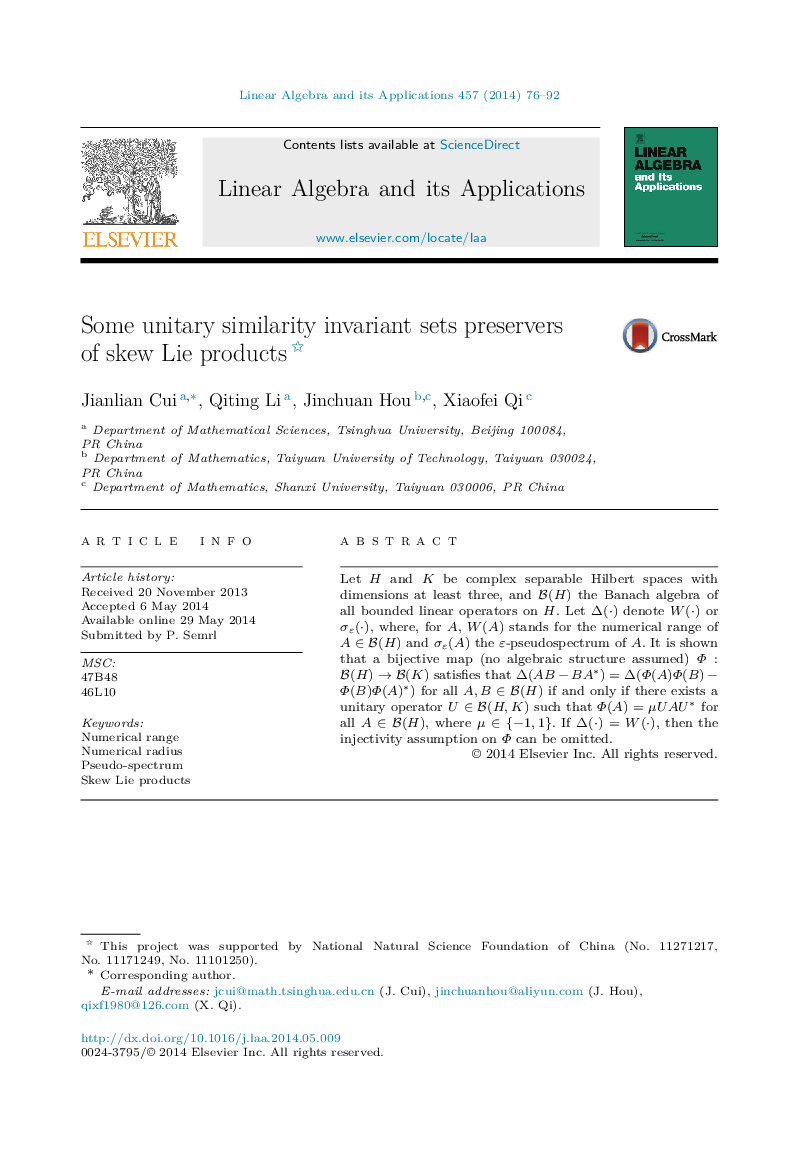| Article ID | Journal | Published Year | Pages | File Type |
|---|---|---|---|---|
| 4599399 | Linear Algebra and its Applications | 2014 | 17 Pages |
Abstract
Let H and K be complex separable Hilbert spaces with dimensions at least three, and B(H)B(H) the Banach algebra of all bounded linear operators on H . Let Δ(⋅)Δ(⋅) denote W(⋅)W(⋅) or σε(⋅)σε(⋅), where, for A , W(A)W(A) stands for the numerical range of A∈B(H)A∈B(H) and σε(A)σε(A) the ε-pseudospectrum of A . It is shown that a bijective map (no algebraic structure assumed) Φ:B(H)→B(K)Φ:B(H)→B(K) satisfies that Δ(AB−BA⁎)=Δ(Φ(A)Φ(B)−Φ(B)Φ(A)⁎)Δ(AB−BA⁎)=Δ(Φ(A)Φ(B)−Φ(B)Φ(A)⁎) for all A,B∈B(H)A,B∈B(H) if and only if there exists a unitary operator U∈B(H,K)U∈B(H,K) such that Φ(A)=μUAU⁎Φ(A)=μUAU⁎ for all A∈B(H)A∈B(H), where μ∈{−1,1}μ∈{−1,1}. If Δ(⋅)=W(⋅)Δ(⋅)=W(⋅), then the injectivity assumption on Φ can be omitted.
Keywords
Related Topics
Physical Sciences and Engineering
Mathematics
Algebra and Number Theory
Authors
Jianlian Cui, Qiting Li, Jinchuan Hou, Xiaofei Qi,
